Why is my plant dropping? Questioning yourself that way may lead you to find the causes why your houseplants start looking a little limp, requiring you to take an action. The first thing that you likely do is to water them yet it doesn’t show a single result.
So you need to figure out now what to do next. No worry! Some possible solutions are ready to apply to overcome your dropping plants.
Why Are My Potted Flower Drooping?
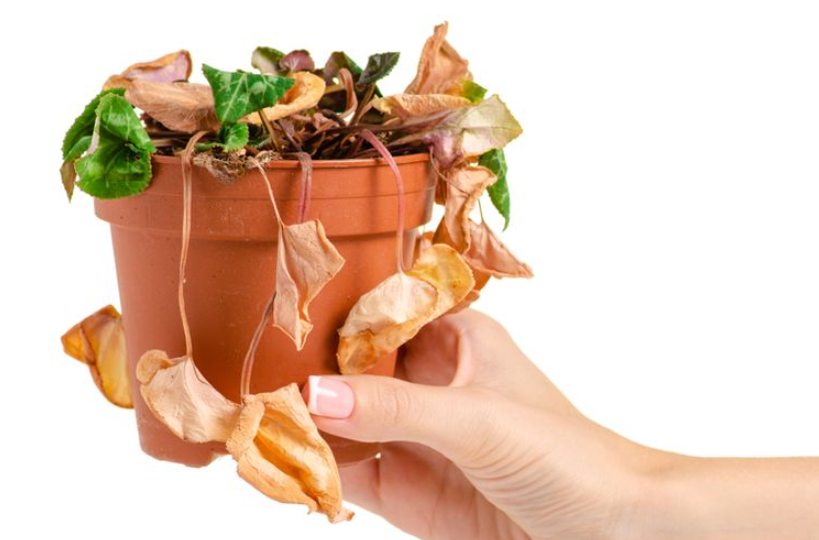
There are some possible causes why your potted flower are drooping. This is a kind of problem that usually occurs on plants. Thus, recognizing the causes is considered prominent as a prior step to find a solution.
Below are the common causes why some potted flower are drooping.
The Leaves Are Dusty
Do you have a plant with the broad and waxy leaves? Basically, they tend to attract household dust to stay on their surfaces. This can be a problem affecting the plants’ healthiness. This way, dust can lead to decrease the photosynthesis process.
When the dust are accumulated on the leaves, the plants will not be able to regulate the moisture content. Dust can even prevent or increase the transpiration. This way, the more the transpiration increases, the more the leaves will droop. This is due to the loss of moisture. As we know, water is an essential element that a plant will absorb.
So what do you have to do with the dusty leaves? Wiping them on upper and lower surface regularly using a wet sponge or the other similar one.
The Plants Have Low Humidity
Why is my plant dropping? Low humidity can be one of the most possible causes. When the leaves are drooping, it may be an indication that the plants have a low humidity. This occurs commonly on species from the tropical rainforest like Alocasia, Fittonia and Anthurium.
A lack of moisture in the air cause the humid-loving plants to lose much more water through the leaves because of transpiration. This way, the roots are unable to supply enough moisture. As a result, the leaves will droop.
If the low humidity is the real problem, do place the plants on a tray full of coir or gravel with the half-filled of water. You need also to vapor the leaves at least once a day to boost the humidity. Alternatively, you can have the humidifier to run closely at your plants.
Other solution to try to deal with the humidity case is growing your tropical plants in a closed terrarium. This is how you use a glass structure setting up a humid microclimate around your plants. Note, this solution is much ideal to treat tropical species with humidity problem.
Why Is My Indoor Plant Drooping?
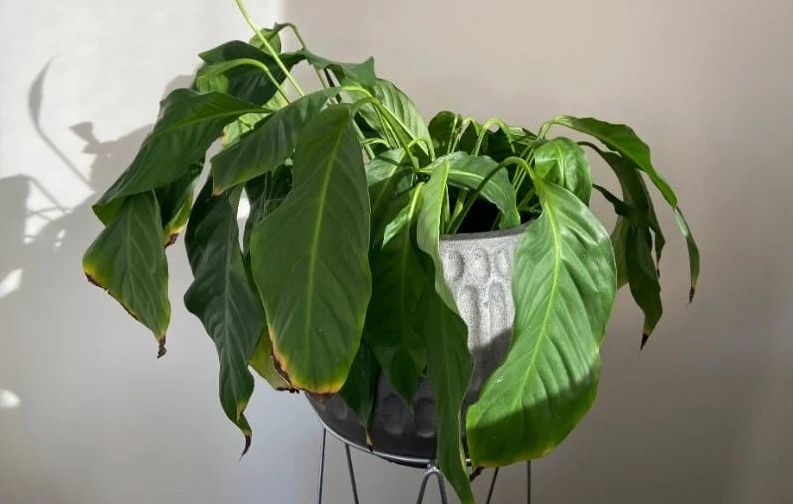
Do you have a droopy indoor plants? If you notice they are starting to droop, think of the following causes:
The Sunlight is Incorrect
Why is my plant drooping? Another reason is probably the sunlight is incorrect. This way, the droopy plants are caused by the fact that they don’t receive enough sunlight for photosynthesis. This is especially occurring in plants that come with the pale patches. The leaves pale sections has not enough chlorophyll so that the leave cannot photosynthesize. This way, the plants need brighter sunlight.
Meanwhile, if your plants are in the area with a shade, you are suggested to move them into an open area to receive much light or move them away from the window.
Also read: How To Grow Basil Hydroponically at Home
Plant Drooping after Watering
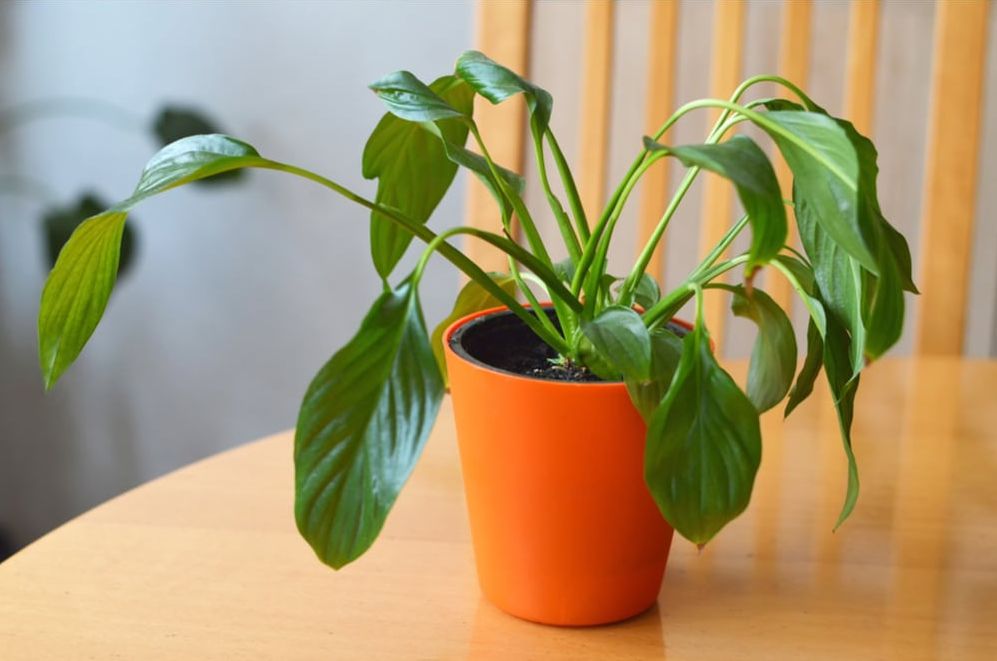
Believe it or not, the plants can droop after watering. This is called a case of over-watering. In this case, giving too much water in the soil can eliminate the air pockets from which the root will get an oxygen. Once this case occurs, the roots will be unable to absorb the moisture and nutrients needed by the plants. As for solution, you need to change the soil to a mix with a better draining by adding gravel or coir.
If you think that over-watering is the case of your drooping plants, take a closer look at the root for root rot. Treat it using the horticultural hydrogen peroxide to provide the roots with the concentrated amount of oxygen.
So remove the plants from the pot firstly. After that, you need to completely remove the soil from the roots. Cut off any damaged roots and treat using 1-quart water to 1 oz. hydrogen peroxide. Soaking the roots for an hour is the final steps in this solution.
Other way, you can also add 2 ½ teaspoon of 3 percent hydrogen peroxide per gallon of water. Keep in mind that this method can be used only to water the plants until they revive.
Why Is My Plant Drooping after Repotting?
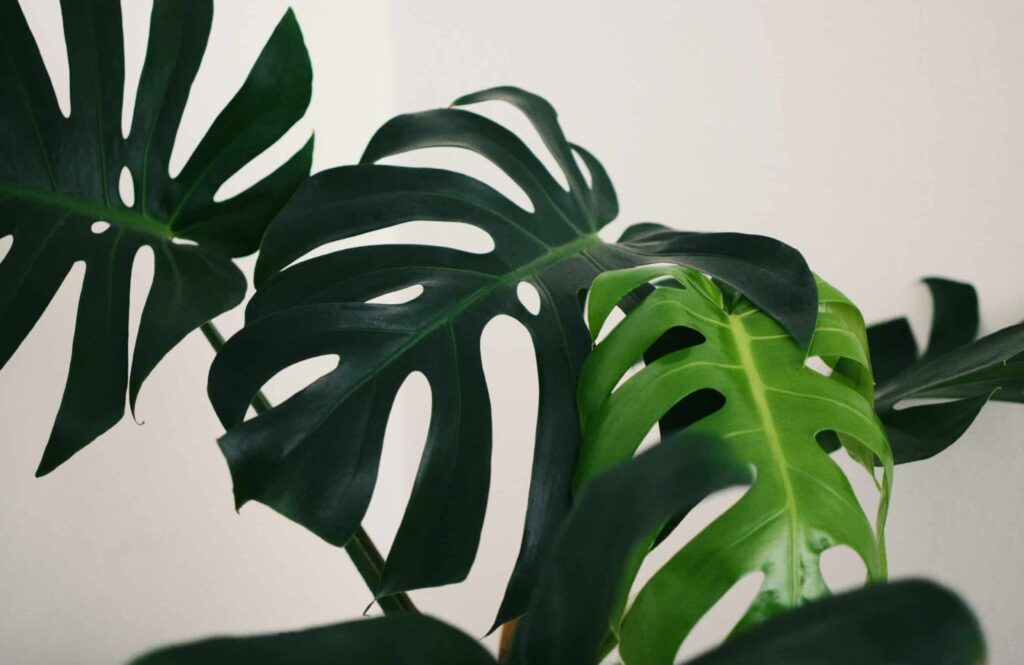
Why is my plant drooping after repotting? Most cases show that it is due to the root damage during the repotting. There is surely a sudden change in the plants conditions that they are struggling to react to. The most common ways to overcome the drooping plants after repotting include optimizing care before and after repotting and the providing a great care while repotting to avoid root damages. These will help prevent the plants from wilting or drooping.
Drooping after repotting is just a common thing in the first few days after repotting. It is believed that the great care during the process of repotting will help prevent wilting in most situations.
Repotting is sometimes stressful for the plants since they must get adapted to the new environment and conditions. They are moved from the place where they grow happily to a new place with a new environments.
Keep in mind that root damage can easily occur even when you have carefully done the repotting process. The impact would be on the plant’s roots that are disturbed too much. This way, the roots can be so fragile to absorb water and nutrients. Remember, many plants need to absorb a significant proportion of water through the tiniest roots.
The change in soil can also be the source of case why your plant is drooping after repotting. This way, the soil composition may shock the root system and lead to wilting. So what to do to deal with this problem?
If you want to repot the whole part of the plants, try to use the same mix of soil but add it with amendments like coarse or perlite sand to help increase the drainage. This will ensure the pot’s well-draining. Also, consider materials which are porous such as terracotta. It will improve the drying soil.
Of all the problem of wilting after repotting, a lack of water and change in climate may be the main cause of drooping. The best ways you can take as solutions are repotting first, waiting for a week and moving your plants outside. In the other words, make sure that your plants have already been healthy enough.
Why Are My Plants Dropping After Transplantation
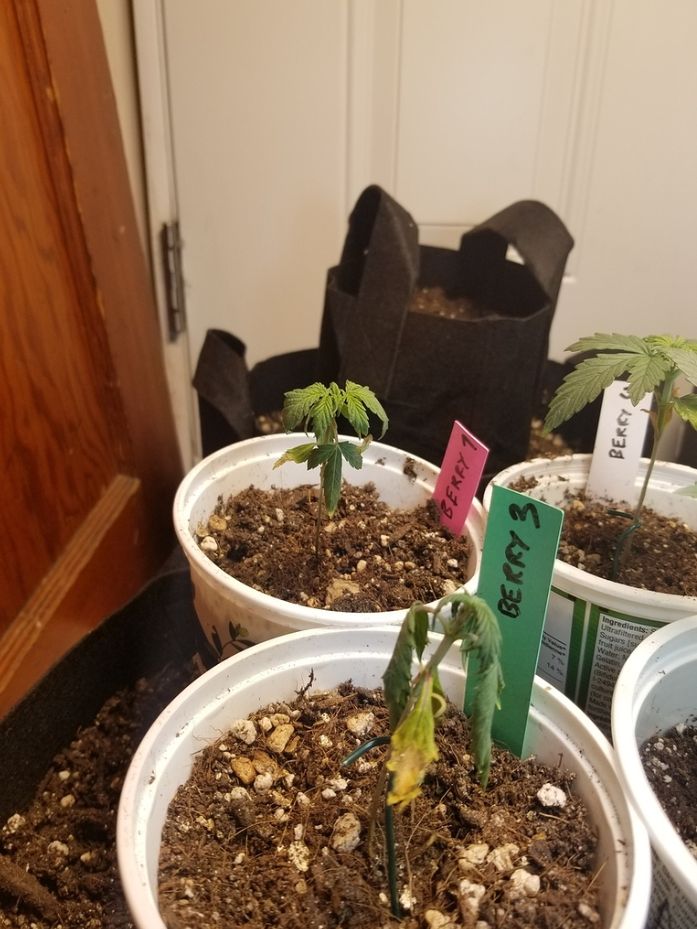
There are some possible causes why your plants are drooping after the transplantation. The most common reason is only due to the minor transplant shock. So, it is not a big problem since the plants will be able to recover after you take care of them for several days.
Here are details you should recognize:
Transplant Damage
Why is my plant drooping after transplantation? Transplant damage is the very possible causes. This way, you might be transplanting incorrectly making the roots unable to absorb water. As the result, the plants begin to droop.
The helpful prevention you need to try is carefully preserving the roots system.
Plants Acclimation
Plants acclimation can also be the cause why plants are drooping after being transplanted. This way, the plants must adapt to the environment including the new area, lighting and temperature. This strain can be reduced by moving the plants into a new location and watering them less often for at least two weeks before you move them permanently.
Plants Condition
Sometimes, the plants themselves that cause them to droop. Replanting the plants after transplantation can make them unhealthy. A lack of water, insect damage, malnutrition and disease are likely causing the plants to droop. Thus, make sure your plants are healthy enough before you transplant them.
Transplant Care
Replanting into a dry soil can cause the plants have less moisture on their roots. Watering the soil lightly where you replant the plants can be very helpful to prevent the plants from further drooping. If you transport the plants after uprooting, it will be drying out and starting to droop in couple of hours due to the lack of water. To reduce the water loss, you can mist the roots and foliage using water and wrapping it in a clear plastic.
How To Save A Dropping Plant
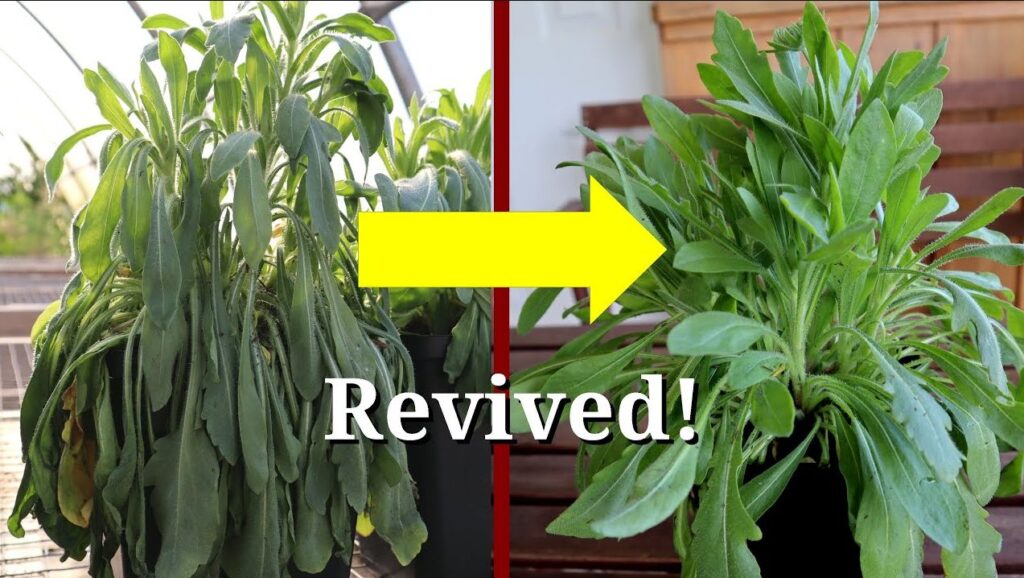
There are 5 simple steps on saving a dropping plant. Recognize the suitable solutions for every problem you may have and save your plants soon.
Water Improvements
Just because you have already watered your plants doesn’t mean that they will be alright. Even when you give them water, they still look on problem. That’s due to the fact that giving too much water can lead the plants to drop, as it occurs when you give less water.
It is quite probable that the water and the soil do not drain enough. The roots will be smothered and unable to properly draw in the water. If the plant’s tissue has no water inside, you will notice the wilting is the case though the pot is not dry at all.
Try to move the plants into a looser soil in your garden. Or you may have a large pot to repot your plants. This can be a big help to improve the water to drain.
Bugs Checking
If water and soil do not seem to be a problem, look at the plants closely and check whether there is any insect or not. There are usually a number of sap-sucking insects behind the droop. Your indoor plants can even experience it.
Insect outbreaks can be prevented by keeping a sticky strip surrounding your plants area. It will help catch the flying insects before they lay eggs on the plants.
Support Providence
Sometimes your plants need only a little help. There is nothing to worry about. Once you see your plants start drooping yet the leaves and stems are still tough, it is possibly that your plants are just getting too heavy for themselves.
This way, a simple solution can be applied. Just provide a rod firmly into the soil. Alternatively, you can affix a support outside the container by using a soft string to boost up the plants gently and attach it to the pole.
Damage Check
If the plants do not wilt outside, take a closer look at the stem and check out whether it gets any damage. If the stem is bent, there might be a lack of water circulation up to the plant. When a plant is drooping, it means that there is a strong hint that only stem is the problem. Try to snip off the damaged stem and let the rest of the plant to grow well.
The Use of Shade
Even when you have provided your plants with the sufficient amount of water based on the schedule, there is still a possibility that the plants are drooping or wilting. It is probably because you locate your plants outdoor under the direct sunlight more than they are cozy with.
In this case, providing shade can be a simple solution that is much recommended. Or you can relocate them to a cooler location.
Also read: 10 Beautiful Brown Flowers That You Don’t Know Existed
Final Words
Why is my plant drooping? Now that you have completely been acknowledged by this review, plant drooping can be prevented. Take steps to recognize what things causing your plants to droop and have a suitable solutions.
Don’t forget to keep this information with you since you can refer to it anytime you need it to give treatment to your plants.